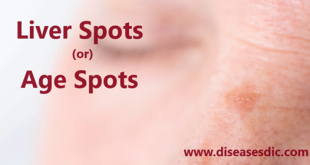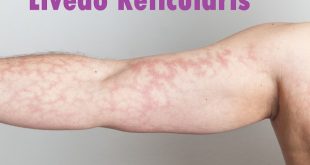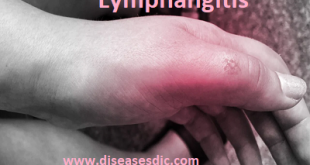What is leukonychia?
Leukonychia also called white nail syndrome, can occur with arsenic poisoning, heart disease, renal failure, pneumonia, or hypoalbuminemia. Leukonychia was first described by Mees in 1919, as an associated finding in arsenic intoxication. Leukonychia or white nail describes the appearance of one or more fingernails and/or toenails that are partially or completely white in color. Nails are generally a pinkish color. Leukonychia can affect anyone: males and females of any age or ethnicity.
Pathophysiology of Leukonychia
Its pathophysiology is not well established, although it is hypothesized to be secondary to abnormal keratinization of the nail plate. According to Newton’s theory, the nail surface appears white because of the reflection of visible light into the eyes. Another theory postulated that a defect in the nail matrix keratinization can cause persistent parakeratosis, keratohyalin granules, and the dissociation of keratin bundles, resulting in visible light reflection that is responsible for the clinically white discoloration of the nails.
Leukonychia exhibits two major findings histopathologically: the presence of parakeratotic cells containing abnormally large keratohyalin granules and the dissociation of the keratin bundles. Assertion by electron ultrastructural examination shows that the dissociated keratin bundles and the intracytoplasmic lipid vacuoles are the most striking ultramicroscopic features of leukonychia. These two major ultrastructural patterns may play a major role in this condition because they are insurmountable by light, which results in the subsequent loss of nail plate transparency.
Leukonychia Classification
Leukonychia is classified into two types:
- True leukonychia originates in the matrix of the nail, the part of the nail that’s responsible for nail production.
- Apparent leukonychia is a problem with the nail bed, the portion of the nail that’s under the nail, and not the nail itself.
True leukonychia can be further divided into two categories based on how the nails look.
- Total leukonychia is a complete whitening of the nail plate. It usually affects all 20 nails.
- Partial leukonychia occurs when a portion of the nail plate is affected by the whitening. It may affect one nail, a few, or all.
Causes and Risk factors
White spots or dots on your nails are common and a variety of factors can cause them. Possibilities include the following.
Allergic reaction
An allergy to nail polish, gloss, hardener, or nail polish remover may cause white spots on your nails.
Chemicals used in the application and removal of acrylic or gel nails can also badly damage your nails and may cause these white spots.
Fungi
A common nail fungus called white superficial onychomycosis can appear on the toenails. The first sign of the infection may be a few small white dots on the nails.
The infection can grow and spread to the nail bed. Toenails may appear flaky and then become thick and brittle.
Hereditary causes
True leukonychia may be an inherited condition, but it’s very rare.
It’s caused by a gene mutation that can be passed by one or both parents to a child. Typically, people born with true leukonychia caused by a hereditary issue experience total leukonychia, and the all-white nails show up at birth or in early in infancy.
In other cases, leukonychia may be the result of rare disorders, including:
- Bart-Pumphrey syndrome, which causes nail abnormalities, knuckle issues, and hearing loss
- Bauer syndromeTrusted Source, which causes leukonychia and skin cysts
- Buschkell-Gorlin syndrome, which causes nail problems, kidney stones, and skin cysts
- Darier disease, which causes nail abnormalities and wart-like blemishes
Injury to the nail
An injury at the matrix, or base of your fingernail that produces the nail plate, can cause white spots or dots on your nail as it grows.
However, because of the time it takes for your fingernails to grow, you may not recall the injury. Some injuries won’t show up for 4 weeks or more.
Common sources of injuries to nails include:
- Shutting your fingers in a door
- Striking your finger with a hammer
- Hitting your nails against a counter or desk
Frequent manicures may also cause damage that results in these white spots on your nails. Pressure applied by the manicurist may damage the nail beds or matrix.
Medicines and poisoning
Some medications can cause white spots in nails. These include chemotherapy medications used to treat cancer, and sulfonamides used to treat bacterial infections.
Additionally, heavy metal poisoning from arsenic and lead can cause lines to develop on nail plates. If you’re exhibiting other symptoms of heavy metal poisoning, see your doctor immediately. A blood test can detect abnormal levels of these elements.
Mineral deficiency
You may notice white spots or dots along your nails if you’re deficient in certain minerals or vitamins. The deficiencies most commonly linked to this issue are zinc deficiency and calcium deficiency.
Your doctor will be able to determine if you are at risk for any mineral deficiency.
Skin conditions
Inflammatory skin diseases, like nail psoriasis and hand eczema, can affect the nail matrix. This can lead to abnormal spots in the nail plate.
Leukoderma causes white patches under the nail. It can be mistaken for whiteness in the nail itself.
Systemic illness
Less common causes for white spots on nails include:
- Heart Disease
- Kidney Failure
- Pneumonia
- Iron Deficiency (Anemia)
- Liver Cirrhosis
- Diabetes
- Hyperthyroidism
While these causes are possible, they are very rare. Your doctor will likely explore a host of other conditions if you have persistent white spots on your nails or other nail abnormalities before considering these more serious issues.
Symptoms of Leukonychia
For some people, the white spots may appear as tiny dots speckled across the nail. For others, the white spots may be larger and stretch across the entire nail plate. The spots may affect one nail or several.
Partial leukonychia can appear in a variety of ways. They may look like:
- Tiny pen-point–sized dots (punctuate leukonychia), which is the most common formTrusted Source
- Larger “lines” across the nail (longitudinal leukonychia)
- Larger individual dots or horizontal bands that are parallel to the base of the nail (striate or transverse leukonychia)
The cause for the white spots on your nail may dictate how the spots appear. A nail injury may cause a large white dot in the middle of the nail. An allergic reaction may cause several dots all over the nail.
The appearance of the white dots or lines may be different on each nail.
You may also have additional symptoms, depending on the cause of the white spots.
Complications of Leukonychia
Nail separates from nail bed
- Nails may separate from the nail bed because of injury or infection.
- The detached nail may turn white with a yellow or greenish tint and may be tender or painful.
- In some cases, a separated nail may be linked to psoriasis or other illnesses.
Having any of these changes does not mean you have an underlying health condition. However, if you are concerned about your nails, play it safe and call your doctor.
Diagnosis of Leukonychia
If your white spots are infrequent, and you think they’re likely related to injury, you may never need to see your doctor about the issue.
Just be more careful to avoid injury or stop the behavior you suspect is responsible for the damage.
If you notice the spots are persistent or worsening, it might be time to see your doctor. Most issues that could cause the white spots are easily treated once they’re diagnosed.
At your appointment, your doctor will inspect the nails on your hands or feet. Based on their observations, they may make a diagnosis and offer a prescription.
To help them understand the underlying issues, doctors may perform one or more tests. These include:
- Mycology, where fungal or nail clippings are sent for study under a microscope
- Nail biopsy, where a sample of the nail or skin tissue is sent for study under a microscope
- Blood test, where blood is examined for evidence of systemic disease or heavy metal poisoning
If they’re unsure about the diagnosis, they may request several tests to eliminate possible causes. This is especially true if your doctor suspects that a vitamin or mineral deficiency is responsible for the white spots on your nails.
Treatment options
Treatment will vary depending on the cause of the white spots. Once you have a diagnosis, your doctor may recommend any of the following treatments.
Avoid allergens and harsh chemicals
Stop using the nail polish, gloss, or other product you think may be responsible for your allergic reaction. If you continue to have symptoms of an allergic reaction after you stop using the products, consult your doctor.
Antifungal medication
Oral antifungal medication is the most common treatment for nail fungus, and many doctors will also prescribe a topical antifungal treatment as well.
The average treatment time is 3 months, and it’s important to use the treatment through the prescribed period of time. Otherwise, you may not fully treat the infection.
Time and rest
Most nail injuries just need time to heal. As the nail grows, the damage will move up the nail plate. Over time, the white spots will disappear entirely.
Cosmetic treatments
If the discoloration of your nails is troublesome, or if you’re seeking a temporary way to cover them up, use nail polish.
Skin tone–colored nail polish is a natural way to hide the spots. And colorful polishes are certainly fun.
Prevention of Leukonychia
There are ways that a person can prevent white spots appearing again. Preventive steps include:
- Avoiding contact with irritant substances
- Avoiding excessive use of nail polish
- Cutting nails short
- Stopping the nails from becoming dry by using moisturizer after washing
In most cases, white spots on the nail are not a problem and will go away in time.
 Diseases Treatments Dictionary This is complete solution to read all diseases treatments Which covers Prevention, Causes, Symptoms, Medical Terms, Drugs, Prescription, Natural Remedies with cures and Treatments. Most of the common diseases were listed in names, split with categories.
Diseases Treatments Dictionary This is complete solution to read all diseases treatments Which covers Prevention, Causes, Symptoms, Medical Terms, Drugs, Prescription, Natural Remedies with cures and Treatments. Most of the common diseases were listed in names, split with categories.







